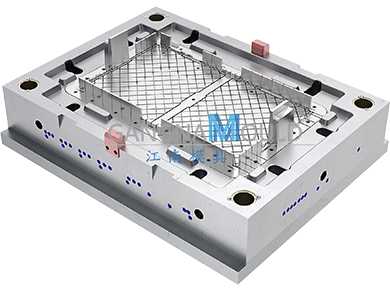What are the process flows of mold processing?
The manufacturing process of molds varies depending on the type (e.g., injection molds, stamping dies, die-casting molds) and complexity, but generally includes the following key steps:
1. Design Phase
◆ Requirement Analysis: Define the mold's purpose, material requirements, production volume, etc.
◆ 3D Modeling: Use CAD software (e.g., UG, Pro/E, SolidWorks) to design the mold structure, including cavities, cores, ejection systems, etc.
◆ Simulation & Validation: Use CAE software (e.g., Moldflow) to simulate injection/stamping processes and optimize runners, cooling systems, etc.
◆ Drafting: Generate 2D engineering drawings with dimensions, tolerances, and surface treatment requirements.
2. Material Preparation
◆ Material Selection: Choose appropriate materials (e.g., P20, H13 steel for injection molds; Cr12, SKD11 for stamping dies).
◆ Blank Preparation: Cut or forge raw materials into rough blanks.
3. Rough Machining
◆ Milling/Turning: Use CNC or conventional machines to remove excess material and roughly shape the mold.
◆ Drilling/Tapping: Process screw holes, cooling channels, etc.
4. Heat Treatment
◆ Quenching/Tempering: Increase hardness (e.g., HRC 48-52).
◆ Surface Treatment: Apply nitriding, chrome plating, TD coating, etc., to enhance wear resistance (if required).
5. Precision Machining
◆ CNC Finishing: High-precision machining of core components like cavities and cores.
◆ EDM (Electrical Discharge Machining): Process complex shapes or deep grooves (e.g., precision gear molds).
◆ WEDM (Wire EDM): Cut high-precision straight walls or irregular holes.
◆ Grinding: Ensure dimensional accuracy and surface finish (e.g., surface grinding, cylindrical grinding).
6. Fitting & Assembly
◆ Manual Finishing: Polishing (mirror finish/texture), deburring, and mold fitting.
◆ Assembly & Debugging: Install ejector pins, guide pillars, sliders, etc., and test mold opening/closing actions.
7. Trial Production & Inspection
◆ Test Molding: Conduct trial runs on injection/stamping machines to check product dimensions and defects.
◆ Adjustments & Optimization: Correct issues like flash, sink marks, or ejection problems.
◆ Final Acceptance: Deliver the mold after confirming it meets design specifications.
8. Maintenance
◆ Regular Servicing: Clean cooling channels, lubricate moving parts.
◆ Repair: Weld, re-grind, or replace worn/damaged components.
Key Process Considerations
◆ Precision Control: Typically within ±0.01mm, with high-precision molds requiring ±0.002mm.
◆ Surface Treatment: Select polishing grades based on product needs (e.g., mirror finish below Ra 0.8μm).
◆ Cooling System Design: Directly impacts production efficiency and product quality.
Specialized molds (e.g., silicone molds, glass molds) may involve unique processes, but the core workflow remains similar. In practice, steps may be merged or adjusted for efficiency.



 English
English русский
русский Español
Español Français
Français عربى
عربى 简体中文
简体中文




